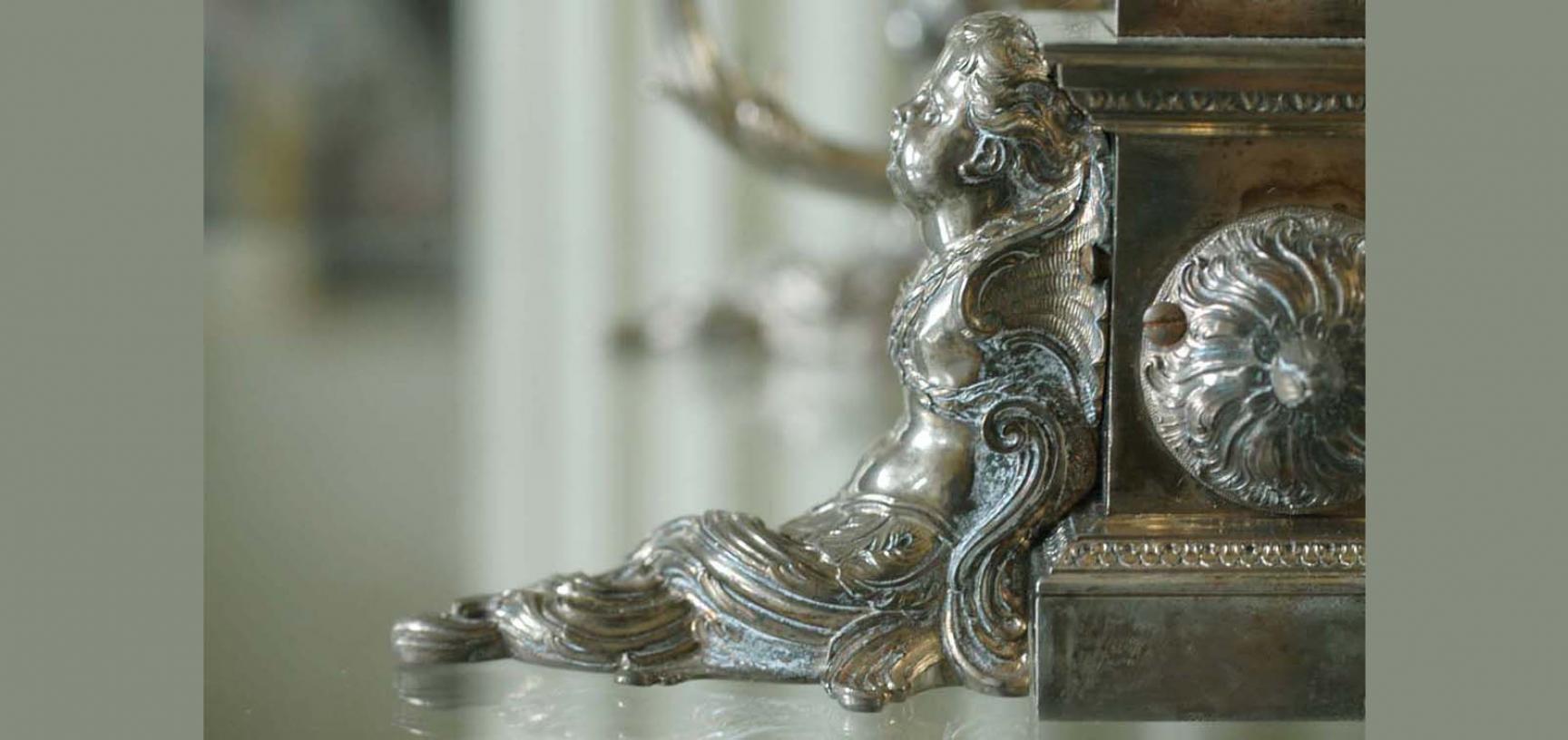Conservation case study: George III silver microscope
A very decorative silver combined microscope made by George Adams in around 1763 for King George III. The classical base and pillar support a revolving disc of eight objective lenses, each with its own specific space. These lenses may be used
as simple microscopes on one side or as part of a compound system on another. The microscope had previously been cleaned in a very poor fashion. From the amount of corrosion and cleaning fluid residues within the detailed decorative fittings,
this was probably done using a water-based silver cleaning fluid that been neither thoroughly rinsed (if at all) nor quickly dried.
Inventory number: 35086
As a result, the silver was tarnished very unevenly, ranging from yellow through to violet and black, and there was a vast amount of cleaning fluid residue in the fine details. The iron components were corroded, so that those that were meant to move could not.
The microscope was disassembled very carefully. Each section was labelled as it was removed, and photographs were taken at each stage. Care was taken not to force any screws that would not move, and the screws were kept separate, bagged and labelled to indicate from which section they had come.
Each piece of the microscope was then surface cleaned using Hagerty Silver Foam using cotton wool swabs and cocktail sticks. Small areas were cleaned one at a time. After removing the desired degree of tarnish, the residues of the foaming silver polish were removed using de-ionised water on cotton wool swabs or soft-haired brushes, and then thoroughly dried with absorbent paper towelling. Each area was then allowed to air dry for at least 24 hours before a protective layer of microcrystalline wax was applied. The iron alloy components were cleaned of corrosion using swabs of a fine grade steel wool or a small brass bristle brush with a little of the microcrystalline wax as a lubricant. This was repeated as necessary, until a satisfactory level of corrosion had been removed. Any remaining residues were removed using clean, dry cotton wool swabs.
When completed, the microscope was re-assembled using the labels and photographic record as a guide.




















